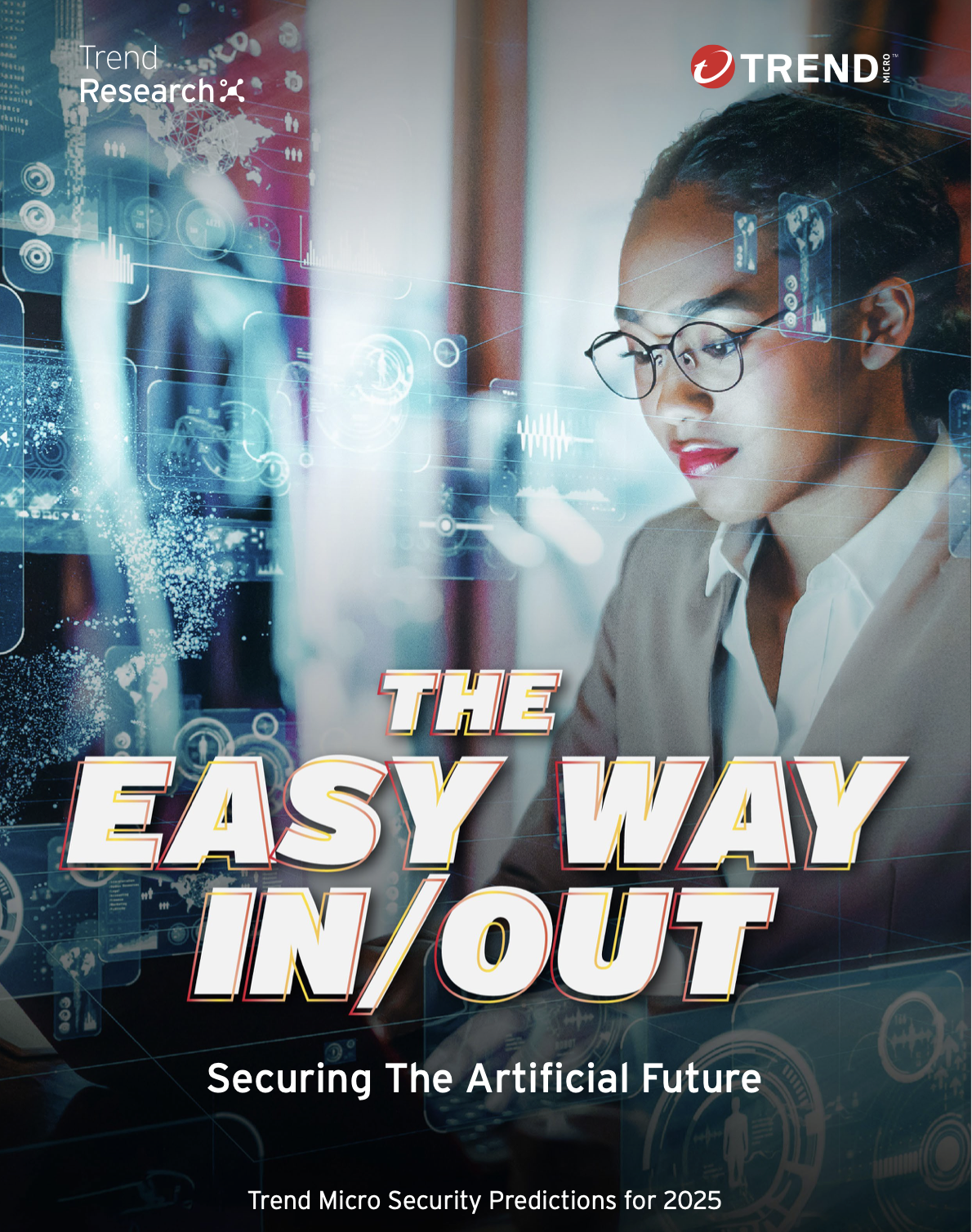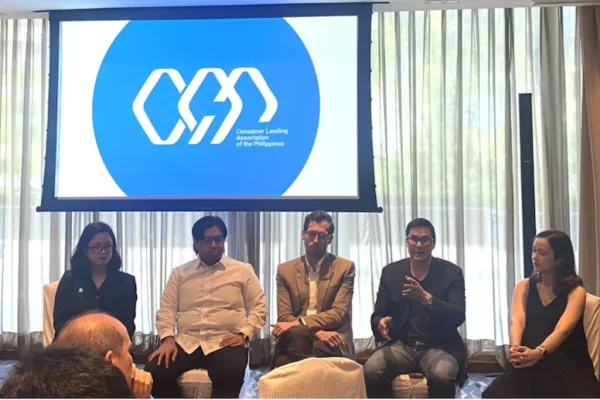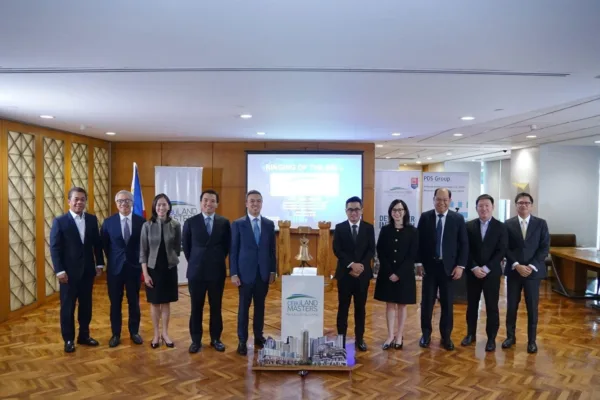The future of cybersecurity is here, and it’s powered by artificial intelligence – but not in the way we might hope.
Trend Micro executives, in a briefing with journalists, painted a stark picture of a coming “artificial future” where AI is weaponized by cybercriminals, driving the projected cost of global cybercrime to a staggering US$10 trillion by 2025. “AI is no longer a futuristic threat,” warned Ian Felipe, Trend Micro Country Manager. “It’s a present and escalating danger.”
Their latest report, Security Predictions for 2025, details the emerging threats.
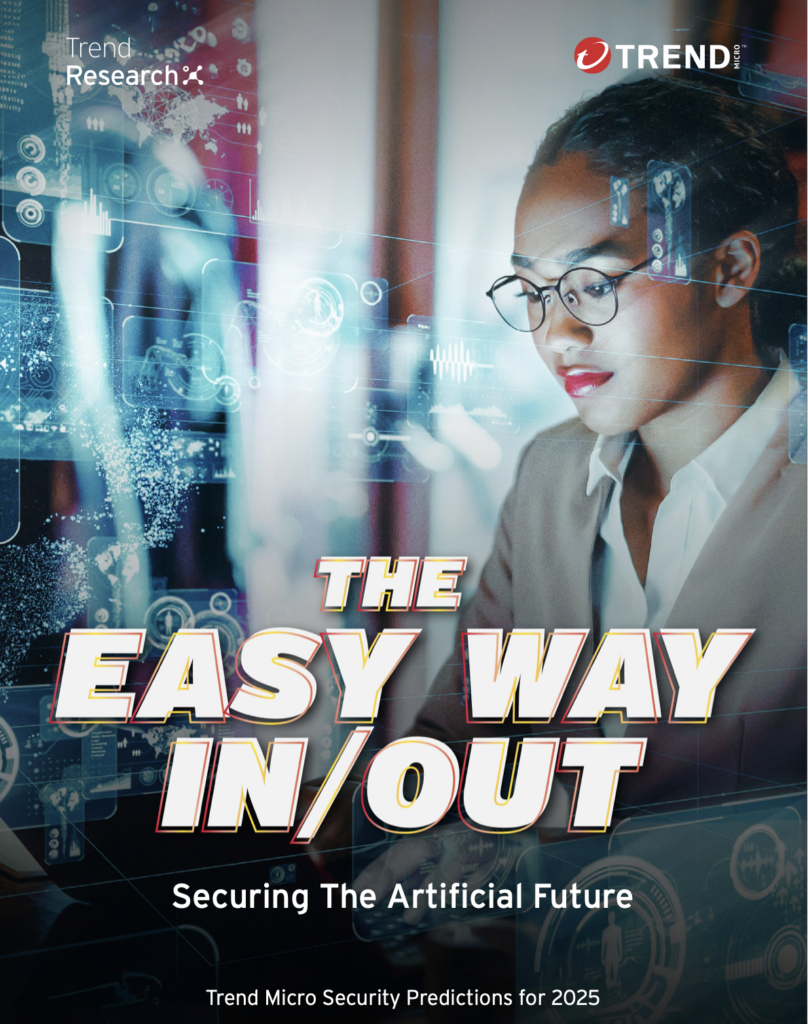
The executives, including Felipe, Trend Labs Senior Security Specialist Raymond Almanon, and Senior Presales Consultant Christina Tee-Bautista, explained how criminals are already using AI to supercharge their operations, exploiting the weakest link: us.
Deepfakes, incredibly realistic forgeries, are a prime example. “Imagine receiving a call from a loved one in distress, only to discover it’s a deepfake designed to manipulate you,” shared Almanon, illustrating the chilling potential of this technology.
AI-powered language models can also craft highly persuasive phishing emails, and semi-automated scams like Business Email Compromise (BEC) are becoming increasingly sophisticated. Still according to Almanon, “AI-powered language models can now mimic writing styles, making phishing emails and other scams even more persuasive. But the danger doesn’t stop there.”
Trend Micro says new attacks targeting AI systems themselves
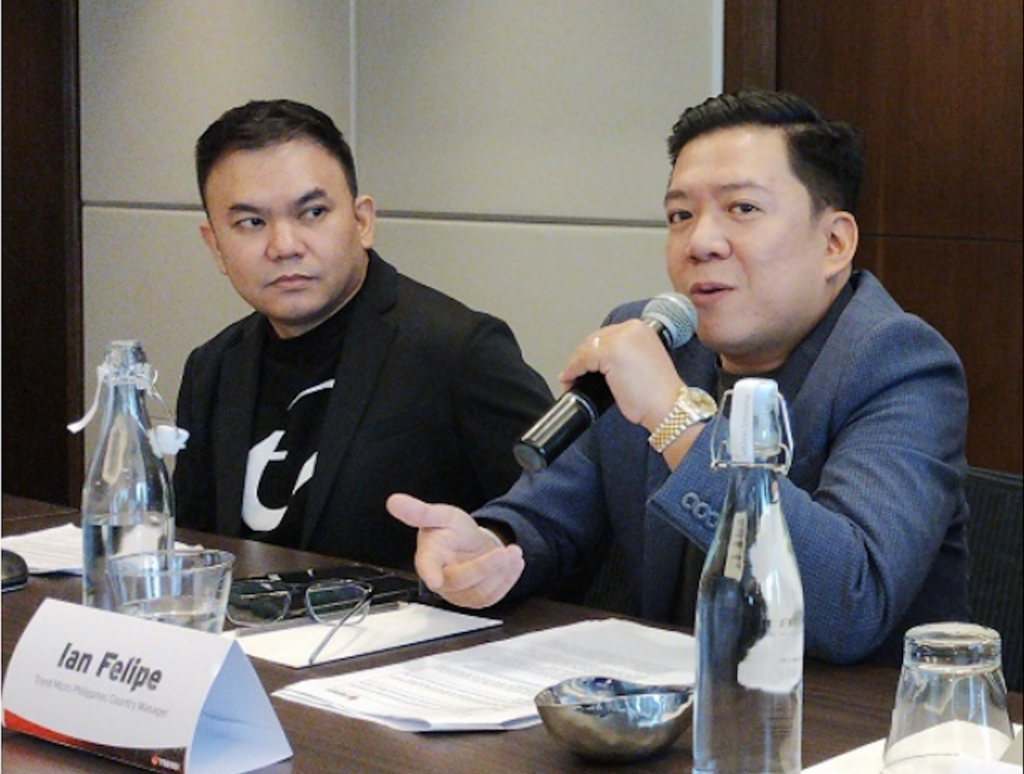
Raymond Almanon (left) together with Trend Micro Country Manager Ian Felipe
Beyond social engineering, AI itself is a target.
Malicious actors can manipulate AI systems for harmful actions, create fake digital identities, or hijack AI agents designed for automation. The increasing reliance on Large Language Models (LLMs) in business also raises concerns about sensitive data leaks.
Adding to the problem, AI tools are readily accessible, enabling even non-technical criminals to launch sophisticated attacks. “AI can translate languages, understand cultural nuances, and create personalized phishing kits,” explained Almanon, significantly broadening the reach of cybercrime.
He also warned of the rise of “pig butchering” scams, preying on vulnerable individuals with carefully crafted, AI-enhanced deception. These attacks, he said, often target lonely individuals.
AI-enabled criminal activities to watch out for
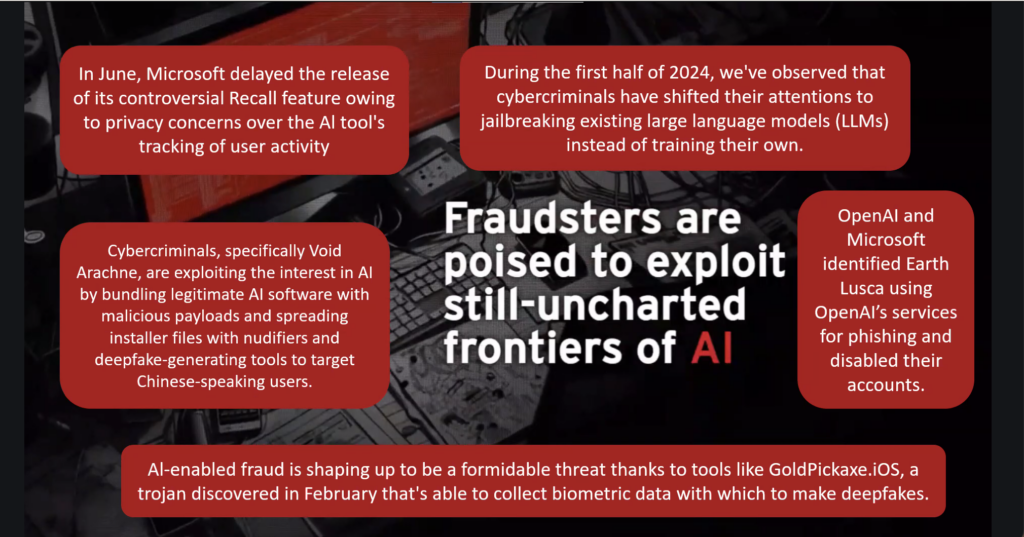
Trend Micro’s 2025 report details other AI-enabled criminal activities, including amplified misinformation campaigns and the theft of proprietary AI models through web scraping. The increasing use of AI agents in businesses also presents further challenges.
These autonomous agents can create complex, opaque chains of events, making it difficult to detect malicious activity, including “agent hijacking.” Even seemingly benign AI agents can pose risks through resource-draining denial-of-service attacks.
The report further highlights that the underground economy will be fueled by consumer data in 2025.
Criminals, driven by profit, will increasingly leverage AI to enhance and accelerate their operations while developing new attack vectors that exploit vulnerabilities in both systems and, crucially, users. AI’s ability to enhance, speed up, and refine criminal schemes makes it a powerful force in the cybercriminal landscape.
Attackers will likewise continue to prioritize ease of access and maximum profit, targeting readily available data storage and misusing legitimate tools.
This pursuit of least resistance will likely involve exploiting publicly accessible resources and leveraging readily available software or services for malicious purposes. Understanding these emerging threats is crucial for both individuals and organizations seeking to protect themselves in the increasingly complex cyber landscape.
A unified platform approach to cybersecurity
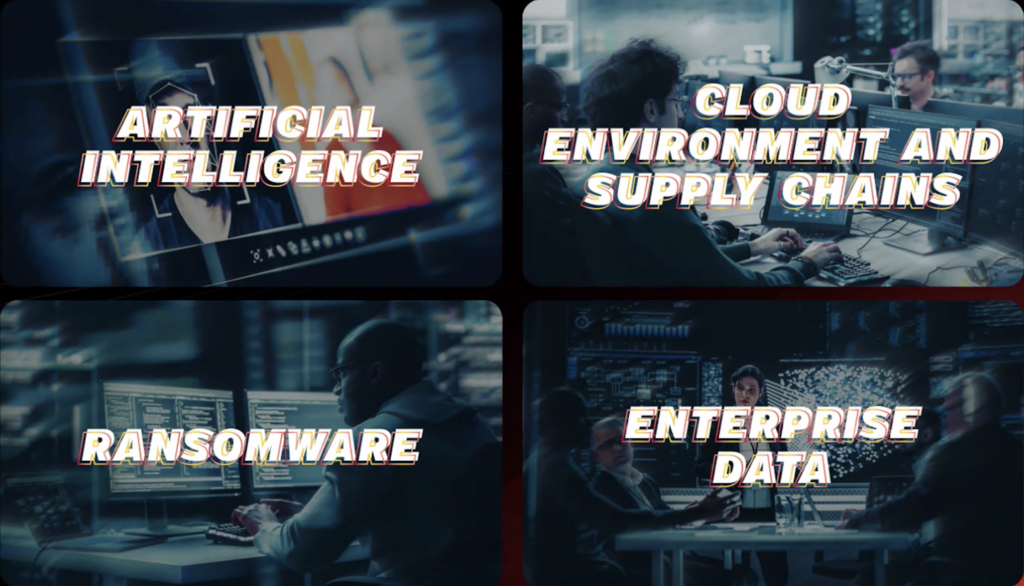
So, how can organizations and individuals protect themselves in this AI-driven threat landscape?
“It’s crucial that everyone actively seek and utilize threat intelligence,” emphasized Tee-Bautista. “Understanding the evolving landscape is the first step towards preparedness.”
She also offered advice for organizations adopting AI: “Research thoroughly before implementing any AI technology, evaluating its benefits and potential risks. Invest in internal skills training for users and developers.”
“Finally,” she urged, “be cyber aware. New technologies create new attack vectors. Understanding the risks of AI allows organizations to proactively combat emerging threats. We’re providing awareness and intelligence about what to expect in 2025 to help them prepare.”
Felipe, for his part, stressed that Trend Micro’s 2025 report is designed to provide this actionable intelligence. The executive also underscored the critical need for a unified platform approach to cybersecurity. “Disparate security solutions are no longer effective,” he stated. “A platform integrating detections, logs, and threat intelligence is essential for rapid response.”
Almanon echoed this sentiment, saying, “Cybersecurity is complex. Partnering with a company possessing the expertise and resources to stay ahead of the curve is crucial.” He cited Trend Micro’s 35 years of experience and global threat research network as a testament to their commitment.
The message from Trend Micro is clear: the rise of AI-powered cybercrime demands a proactive and collaborative approach. The future of cybersecurity hinges on our ability to adapt, innovate, and work together to stay one step ahead of the increasingly intelligent threats we face. The “artificial future” is not predetermined; our collective actions today will determine how secure we are tomorrow.




